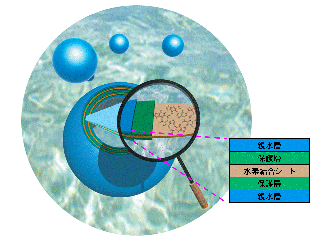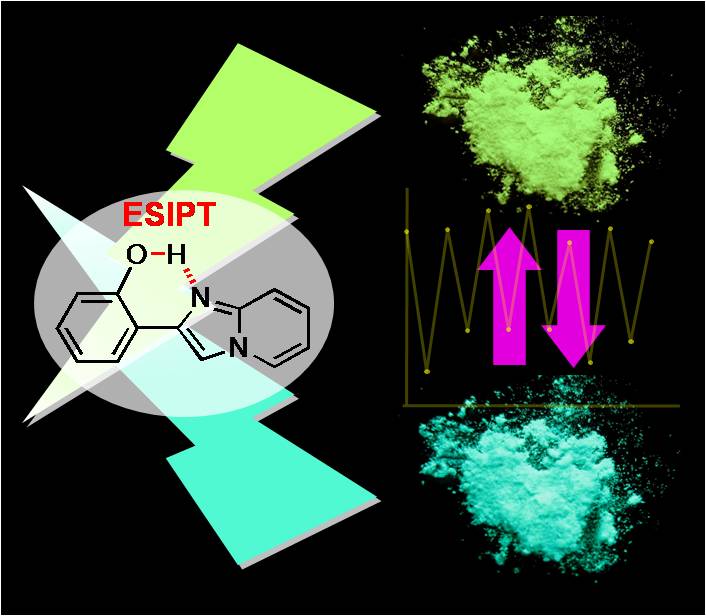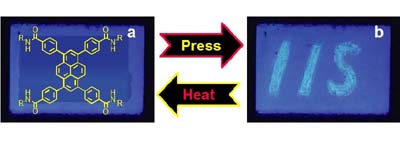|
研究課題:
 超分子マイクロカプセル 水素結合や疎水性相互作用などの分子間相互作用を設計・制御して組織化 された超分子構造を創り出し、単分子では実現できない高機能を発現する 有機超分子材料の開発をおこなっている。例えば以下に示すように、核酸に 適切な分子設計をおこなうことで、塩基部分の間に二次元水素結合ネットワークを 水中で形成させ、直径1μmを超える大きさの安定なマイクロカプセルを作製する ことに成功している。このマイクロカプセルは、内包物放出など外部刺激に対する 動的応答を容易に示すことから、様々な展開が期待される。 Supramolecular Microcapsules Design and construction of highly ordered molecular assemblies by tuning variety of intermolecular interactions opens the way for development of high-functional organic supramolecular materials. Shown below is a stable μm-sized supramolecular capsule, which is successfully fabricated through formation of two-dimensional hydrogen bond networks in water by proper molecular design of a nucleic acid derivative. Since these microcapsules readily show release of encapsulated materials and other dynamic response to external stimuli, variety of application can be expected.
Switching of Solid-state Organic Luminescence by
Interconversion of Mode of Molecular Assemblies
To find a novel design concept of tunable luminescent organic solids, we adopted excited-state
intramolecular proton-transfer (ESIPT) as a tuning tool. A newly designed compound shows strong
blue-green and yellow ESIPT luminescence depending on its solid-state molecular packing, and
reproducible luminescence switching is achieved by heat-mode control of its molecular packing,
demonstrating the ESIPT to be a promising mechanism for packing-to-luminescence transduction and amplification.
Colorless Transparent White-luminescent Polymer Film
Compound B1 absorbs only UV-light and shows intense blue luminescence in the solid state. Similar
compound Y1 also absorbs UV-light but shows intense yellow luminescence due to intramolecular proton
transfer at the excited state. Figure (upper) shows colorless and transparent films containing B1,
B1+Y1 and Y1 from left to right placed on a printed paper under room light. Under UV light (bottom),
white luminescence (B1+Y1) is realized by summation of the blue (B1) and yellow (Y1) luminescence.
Design of Organic Materials showing Piezochromic Luminescence
東京大学生産技術研究所 |


